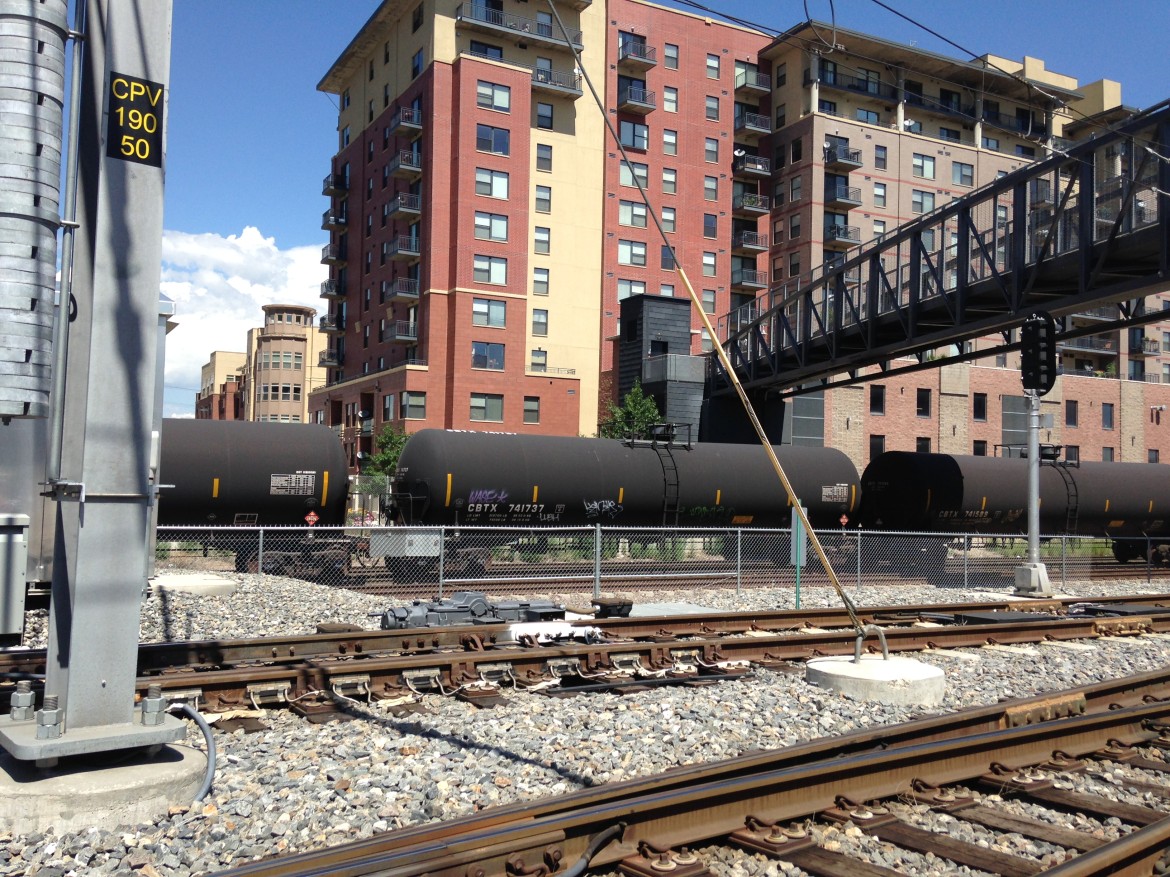
Jordan Wirfs-Brock
Oil trains in downtown Denver.
Ron Schalow started paying attention to oil trains when one exploded in a small town in Quebec last summer and killed 47 people. He lives in Fargo, and while he personally doesn’t live near the railroad tracks, he goes near them all the time.
“My grand-kids like to go to Spicy Pie for pizza. Their folks go downtown all the time,” he said. “I don’t know how much time you’ve spent in downtown Fargo, but it’s all in the blast zone.”
Schalow thinks the state of North Dakota could do more to make oil safer. So, he’s petitioning the Industrial Commission, which regulates the oil industry here, to make oil companies take flammable liquids like butane out of the oil before loading it onto rail cars.
The transportation of oil by rail is one of the clearest connections between the Bakken oil field and regular people around the country. Oil trains run along rivers, near playgrounds and next to homes from Oregon to Virginia. And when they derail and explode, the consequences are devastating.
Last month, the Department of Transportation released a draft of a proposed rule to make hauling oil by rail safer. They’re targeting Bakken crude in particular because there’s so much of it on the rails – and because they say it’s more volatile than other kinds of oil, something the oil industry disputes.
“I do not believe that Bakken oil is materially different from other like crude oils that are being produced particularly in this country today,” said Dennis Sutton, a consultant hired by the North Dakota Petroleum Council to study whether Bakken oil really is more dangerous than other oils.
Sutton defended the safety of Bakken oil in front of the Industrial Commission on Wednesday. The Commission met to discuss possible state-level regulations that would require companies to strip some of the flammable fluids out of oil – essentially what Schalow is asking for in his petition.
“We can make it as safe as possible,” said Lynn Helms, director of the Department of Mineral Resources, who added that it’s not clear yet how the state will do that.
One of the ways to “stabilize” the oil is to heat it, which separates some of the most flammable gasses, and to lower the pressure of the oil before it’s put into a train car. But oil industry executives at Wednesday’s meeting said they weren’t sure how much of a difference that process would make in a crash, and suggested strengthening the cars is more effective.
“There are things you can do at the well site but it will not make a material impact on the flammability in the crude car,” said Steve McNally, the general manager for Hess in North Dakota. “What it will do is add significant costs to each individual well. And as you add individual costs, it makes it more problematic for those wells to be economic.”
Members of the Industrial Commission said they’re going to keep looking into what, if anything, they can do to make the oil safer. After all, North Dakota moves a lot of oil by rail – about ten 100-car trains a day – so the state has a vested interest in making sure that oil gets to market safely.
“Probably everybody knows somebody, somewhere in the country, who either is living, or works, or plays, within what they call the blast zone,” said Ron Schalow. In other words, what the commission decides affects people outside of North Dakota, too.








